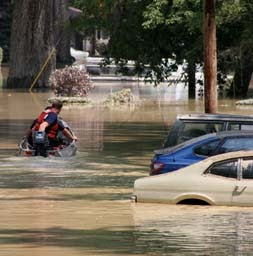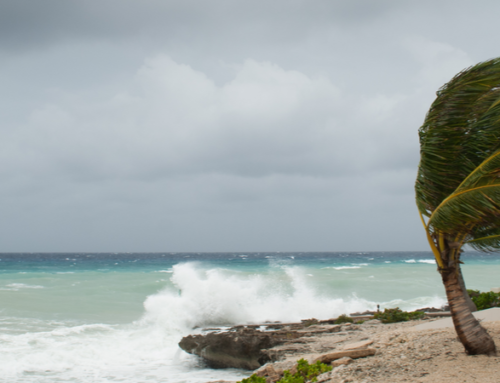 It’s hard to imagine that something so good for us can wreak so much havoc. But water, in the form of floods, has caused extensive, and expensive, damage across the country.
It’s hard to imagine that something so good for us can wreak so much havoc. But water, in the form of floods, has caused extensive, and expensive, damage across the country.
Insurers used to believe that you needed flood insurance only if you were in a flood zone. But flood zones have been expanded in recent years, and many homeowners who were not in traditional flood zones now live in them.
Even homeowners who don’t live in high hazard flood zones have found that their homes can be ruined by a flood. Recently, one of our clients had many of his possessions destroyed when his basement flooded-in his house on top of a hill.
Residential and commercial properties can be at risk for flooding from heavy rains and/or melting snow. According to the National Flood Insurance Program (NFIP): “Anywhere it rains, it can flood. A flood is a general and temporary condition where two or more acres of normally dry land or two or more properties are inundated by water or mudflow. Many conditions can result in a flood: hurricanes, broken levees, outdated or clogged drainage systems and rapid accumulation of rainfall.”
Insurance helps make us whole in the event of physical damage to property. But most homeowner’s insurance policies do not cover flood damage, so you might want to evaluate your situation and the need for flood insurance on top of your regular homeowner’s policy.
I’m sure that you, like most consumers, invest a lot of time, money, and effort into maintaining your property. You can mitigate or even prevent damage to your property if you follow these guidelines for what to do before, during, and after a flood.
Before a Flood:
- Buy the right insurance. Discuss with your agent if flood insurance is appropriate for you. Flood insurance may be mandatory if you live in a high-risk area and if your mortgagor,requires it. You may or may not need an elevation certificate to determine the lowest elevation of the property based on your community’s flood insurance rate map (FIRM). The NFIP reports the average annual flood insurance premium is $570.
- Be organized. Keep a file (protected from water exposure in a safe place, like a safe-deposit box) that contains a copy of your flood policy, your agent contact information, and an inventory of receipts and photos or a video of each room. You may even want to create an electronic file containing your scanned insurance policy, receipts, and photos or a video and back it up in several different locations.
- Make sure your mechanical systems work and are protected. Invest in a sump pump for the lowest elevation prone to flooding and consider installing a battery-operated backup in the event of a power failure. Install an alarm to detect any water accumulation on the lowest-elevation floor. Clear your gutters so water gets moved away from your foundation. Protect fuel tanks, appliances, and the furnace by elevating them a foot off the ground floor.
During a Flood:
- Turn off the power if you are instructed to do so by emergency authorities.
- Go to higher ground or areas not subject to flooding.
- Do not walk or navigate in flooded areas.
- Make sure you and your family are safe.
After a Flood:
- Call your agent to report the claim. Have your policy information handy. Once the claim is filed, an adjuster will be assigned to assess your property and the damage.
- Make sure the property is safe prior to entry.
- Take photos of damaged areas you can access without risk.
- Inventory damaged and/or lost items with referencing receipts and photos to help determine their value.
- Consult an electrician to determine whether it’s safe to turn on the utilities.
- Protect your health by boiling water, disinfecting items that were possibly contaminated by floodwaters, and drying out contents to prevent mold.
The National Flood Insurance Program lapsed on May 31, 2010 after several efforts to extend the program were not passed by Congress.
Ed note: We will continue to monitor the situation on the National Flood Insurance Program and update this post with any news on any legislation.
UPDATE 7/1/2010: The Senate passed the National Flood Insurance Program Extension Act of 2010 (H.R. 5569), extending the NFIP until September 30. The bill is retroactive and covers the lapsed period from June 1, 2010, to the date of enactment of the extension, and will allow currently stalled transactions to move forward. Any new policy applications or renewals that were signed and submitted during the lapsed period will be effective from the date of application. In the case of waiting periods, the waiting period will start from the date of application.
UPDATE 7/16/2010: Today the House voted to update the federal flood-insurance program. The program, run by FEMA, provides over five million homeowners and businesses with subsidized flood insurance.
UPDATE 9/21/2010: Today the Senate voted (S.3814) to extend the National Flood Insurance Program until September 30, 2011.
Congress hasn’t updated the program since 1994 and since then it’s been hit with some heavy debt. Losses have been in the billions in the wake of Hurricane Katrina and other floods in highly populated risk areas.
Updates to the bill include permitting an increase in premiums, deductibles and coverage and phasing out subsidies for vacation homes and homes located in areas repeatedly hit by floods.
According to the National Flood Insurance Program, nearly 21,000 communities participate in the program. To find out if your community is one of them and how much a flood insurance policy at your specific address will cost visit floodsmart.org.
Check back here for updates on the bill, the updates in the bill, if it passes the Senate and what it will mean for taxpayers.
For more information on how flood insurance will help protect your property, consult with your agent and visit the websites of the Federal Emergency Management Agency (FEMA), and the National Flood Insurance Program (NFIP).
Linda Rey is a licensed insurance agent at Rey Insurance with a broad spectrum of expertise in life, accident, health, property and casualty insurance as well as retirement planning and college funding strategies.
Follow Linda on Twitter.
Flood Insurance: What to do Before, During and After a Flood






